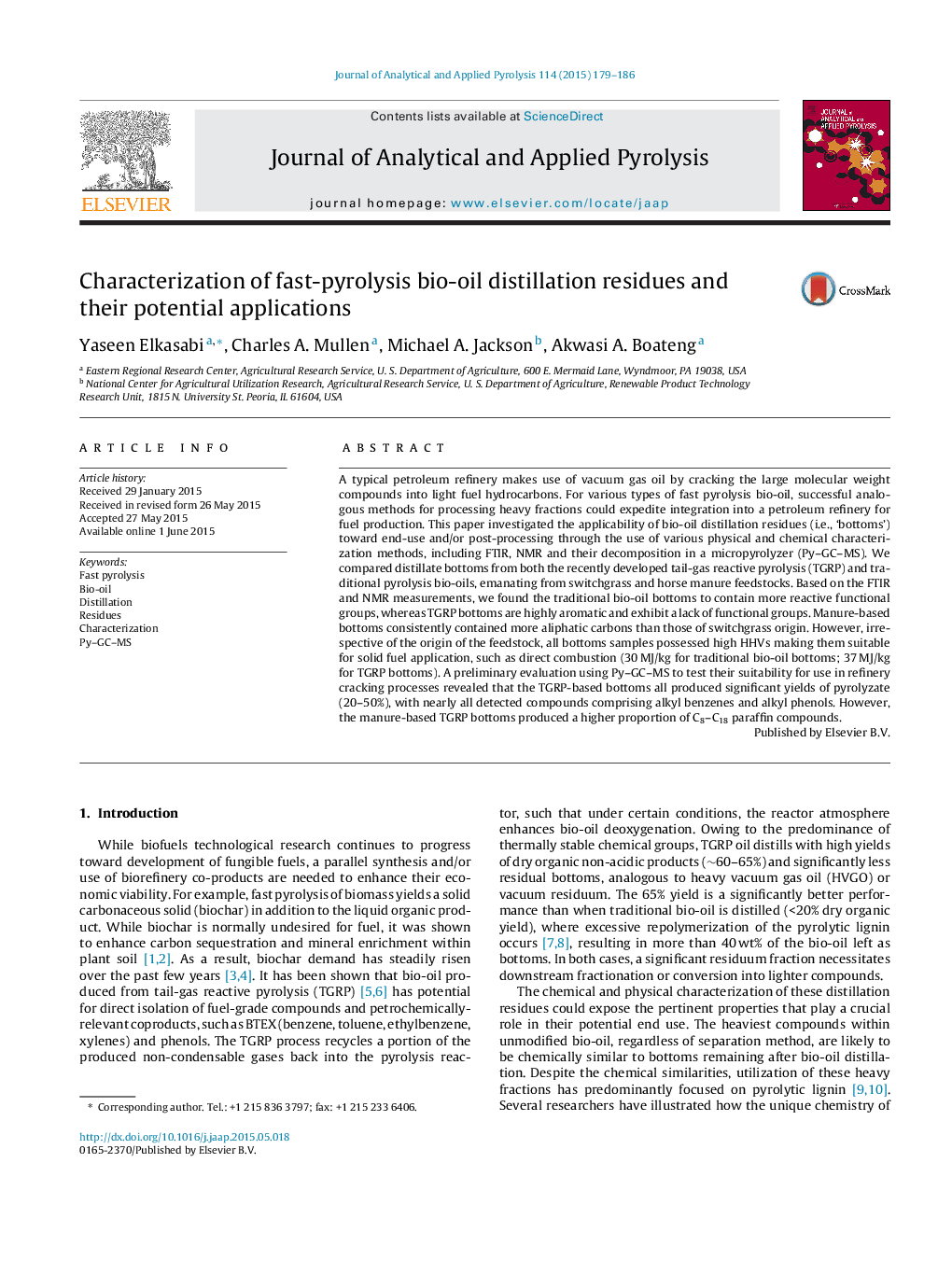| Article ID | Journal | Published Year | Pages | File Type |
|---|---|---|---|---|
| 1196978 | Journal of Analytical and Applied Pyrolysis | 2015 | 8 Pages |
•Tail-gas reactive pyrolysis (TGRP) and traditional pyrolysis of biomass was performed.•Resulting bio-oils were distilled, and the bottoms residues were characterized.•TGRP bottoms are highly aromatic; traditional bottoms retain reactive functional groups.•Py–GC–MS of TGRP residues produced significant yields of light hydrocarbons and phenols.
A typical petroleum refinery makes use of vacuum gas oil by cracking the large molecular weight compounds into light fuel hydrocarbons. For various types of fast pyrolysis bio-oil, successful analogous methods for processing heavy fractions could expedite integration into a petroleum refinery for fuel production. This paper investigated the applicability of bio-oil distillation residues (i.e., ‘bottoms’) toward end-use and/or post-processing through the use of various physical and chemical characterization methods, including FTIR, NMR and their decomposition in a micropyrolyzer (Py–GC–MS). We compared distillate bottoms from both the recently developed tail-gas reactive pyrolysis (TGRP) and traditional pyrolysis bio-oils, emanating from switchgrass and horse manure feedstocks. Based on the FTIR and NMR measurements, we found the traditional bio-oil bottoms to contain more reactive functional groups, whereas TGRP bottoms are highly aromatic and exhibit a lack of functional groups. Manure-based bottoms consistently contained more aliphatic carbons than those of switchgrass origin. However, irrespective of the origin of the feedstock, all bottoms samples possessed high HHVs making them suitable for solid fuel application, such as direct combustion (30 MJ/kg for traditional bio-oil bottoms; 37 MJ/kg for TGRP bottoms). A preliminary evaluation using Py–GC–MS to test their suitability for use in refinery cracking processes revealed that the TGRP-based bottoms all produced significant yields of pyrolyzate (20–50%), with nearly all detected compounds comprising alkyl benzenes and alkyl phenols. However, the manure-based TGRP bottoms produced a higher proportion of C8–C18 paraffin compounds.
